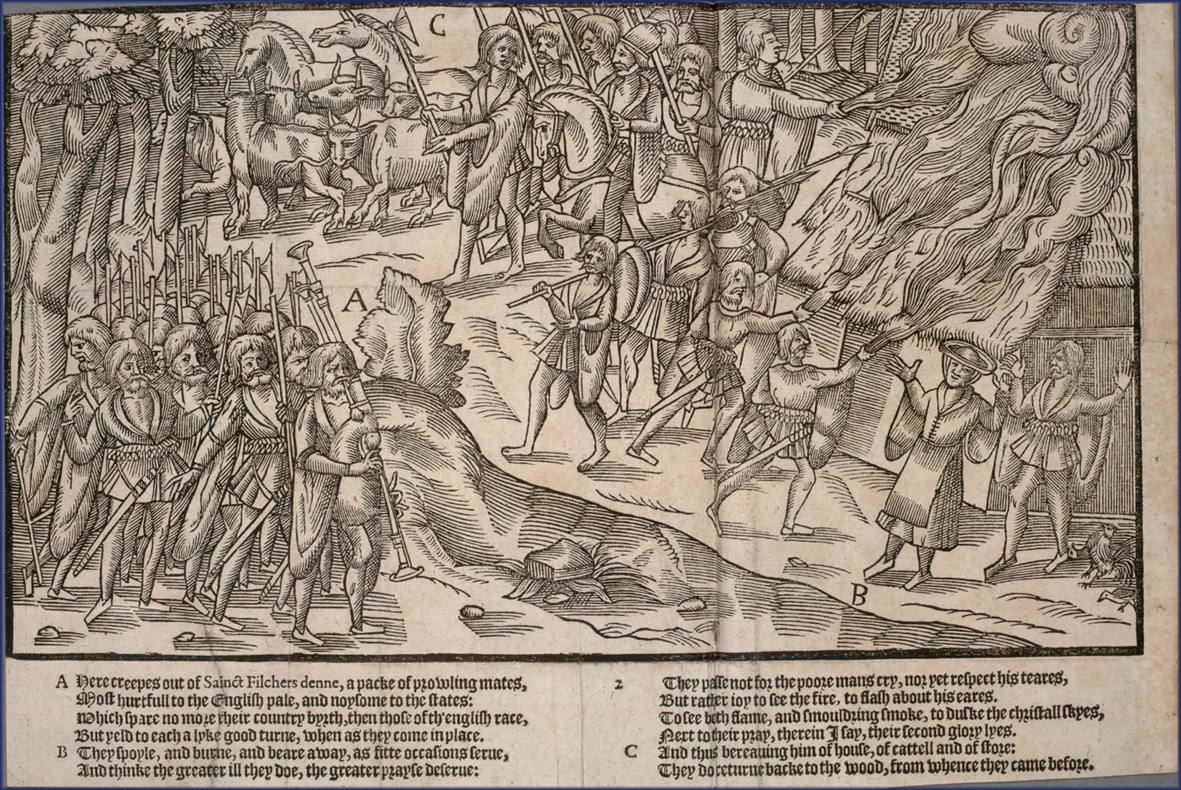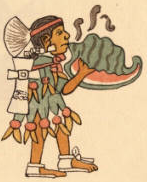Signal Instrument on:
[Wikipedia]
[Google]
[Amazon]




 A signal instrument is a
A signal instrument is a




 A signal instrument is a
A signal instrument is a musical instrument
A musical instrument is a device created or adapted to make musical sounds. In principle, any object that produces sound can be considered a musical instrument—it is through purpose that the object becomes a musical instrument. A person who pl ...
which is not only used for music as such, but also fit to give sound signals as a form of auditive communication, usually in the open air. Signal instruments are often contrasted with melodic
A melody (from Greek μελῳδία, ''melōidía'', "singing, chanting"), also tune, voice or line, is a linear succession of musical tones that the listener perceives as a single entity. In its most literal sense, a melody is a combinat ...
and diatonic or chromatic instruments ("a musical (rather than signal) instrument"Fenlon, Iain; ed. (2009). ''Early Music History: Studies in Medieval and Early Modern Music'', p.173, n.28. Cambridge University. . is not uncommon phrasing).
To make the message audible at a distance, percussion
A percussion instrument is a musical instrument that is sounded by being struck or scraped by a beater including attached or enclosed beaters or rattles struck, scraped or rubbed by hand or struck against another similar instrument. Exc ...
and brass instrument
A brass instrument is a musical instrument that produces sound by sympathetic vibration of air in a tubular resonator in sympathy with the vibration of the player's lips. Brass instruments are also called labrosones or labrophones, from Latin a ...
s, which are generally loud, are chiefly used for this purpose. There are contemporary instruments which evolved from signal instruments, such as the natural horn
The natural horn is a musical instrument that is the predecessor to the modern-day (French) horn (differentiated by its lack of valves). Throughout the seventeenth and eighteenth century the natural horn evolved as a separation from the trump ...
evolving to the trumpet
The trumpet is a brass instrument commonly used in classical and jazz ensembles. The trumpet group ranges from the piccolo trumpet—with the highest register in the brass family—to the bass trumpet, pitched one octave below the standard ...
.
Environment
Before the introduction of modern technological communication, signaling over a distance was often a very good way to pass messages, especially in difficult terrain such as the mountains (e.g.Alpine horn
The alphorn or alpenhorn or alpine horn is a labrophone, consisting of a straight several-meter-long wooden natural horn of conical bore, with a wooden cup-shaped mouthpiece. Traditionally the Alphorn was made of one single piece, or two parts ...
, equivalents are still used in parts of the Himalaya
The Himalayas, or Himalaya (; ; ), is a mountain range in Asia, separating the plains of the Indian subcontinent from the Tibetan Plateau. The range has some of the planet's highest peaks, including the very highest, Mount Everest. Over 100 ...
) or sparsely populated plains or forests (the tam-tam
A gongFrom Indonesian and ms, gong; jv, ꦒꦺꦴꦁ ; zh, c=鑼, p=luó; ja, , dora; km, គង ; th, ฆ้อง ; vi, cồng chiêng; as, কাঁহ is a percussion instrument originating in East Asia and Southeast Asia. Gongs ...
type of drums as with American Indians and jungle drums), sometimes using rather elaborate code systems to pass even complex information.
Another ancient function, which has survived into modern urban life is to assemble or warn a whole population or congregation at large, usually not coded or just for a few common cases, as with a conch
Conch () is a common name of a number of different medium-to-large-sized sea snails. Conch shells typically have a high spire and a noticeable siphonal canal (in other words, the shell comes to a noticeable point at both ends).
In North Am ...
or bells in a church or belfry: a variation for more local use is the gong
A gongFrom Indonesian and ms, gong; jv, ꦒꦺꦴꦁ ; zh, c=鑼, p=luó; ja, , dora; km, គង ; th, ฆ้อง ; vi, cồng chiêng; as, কাঁহ is a percussion instrument originating in East Asia and Southeast Asia. Gongs ...
.
Many types, especially the older ones, have also survived for ceremonial use, as in religion (often conservative in its forms) or gong ceremony.
Hunting
While the types mentioned above are mainly used from one spot, signal instruments may also be useful to communicate on the move, when many alternatives were less practical. Naturally then instruments are preferred which are not too delicate to be moved, and often not too heavy (except when the musician is mounted or in a vehicle) to transport, or even better be played during march or even chase. Thus hunters traditionally use ahunting-horn
A horn is any of a family of musical instruments made of a tube, usually made of metal and often curved in various ways, with one narrow end into which the musician blows, and a wide end from which sound emerges. In horns, unlike some other bras ...
to communicate, while drums (often just improvised 'percussion') were rather by drivers while shouting. When the social elite practiced hunting as a prestigious outdoors social activity, music was often present at any stage, e.g. the court of Versailles
The Palace of Versailles ( ; french: Château de Versailles ) is a former royal residence built by King Louis XIV located in Versailles, about west of Paris, France. The palace is owned by the French Republic and since 1995 has been managed, u ...
had composers such as the Danican family and Philidor write special symphonies for a court orchestra to accompany the royal hunt party, prominently featuring percussion and winds but also including non-signal instruments, even strings.
Military, paramilitary and other uniformed services
In the (para)military and similar, mainly uniformed, corps such as police, the tradition of march music stems from the use of signal instruments, mainly metal winds (as the modernbugle
The bugle is one of the simplest brass instruments, normally having no valves or other pitch-altering devices. All pitch control is done by varying the player's embouchure.
History
The bugle developed from early musical or communication ...
and clarion
Clarion may refer to:
Music
* Clarion (instrument), a type of trumpet used in the Middle Ages
* The register of a clarinet that ranges from B4 to C6
* A trumpet organ stop that usually plays an octave above unison pitch
* "Clarion" (song), a 2 ...
), originally (and still) to pass standardized orders (often at a small tactical level), while percussion and flutes served mainly to march on the beat; especially when a larger force is gathered with ceremony (just drums often do, as in ruffles and flourishes
Ruffles and flourishes are preceding fanfare for honors music, ceremonial music for distinguished people.
By country Israel
In the Israeli Defence Forces, ruffles and flourishes are sounded as a guard of honor presents arms to signify the honors ...
or accompanying formal administration of corporal punishment), both can be combined into a band.
See also
*Drums in communication
Developed and used by cultures living in forested areas, drums served as an early form of long-distance communication, and were used during ceremonial and religious functions.
Types Talking Drum
While this type of hourglass-shaped instrumen ...
*Fife and drum corps
A Fife and drum corps is a musical ensemble consisting of fifes and drums. In the United States of America, fife and drum corps specializing in colonial period impressions using fifes, rope tension snare drums, and (sometimes) rope tension bas ...
* Olifant
*Post horn
The post horn (''also'' post-horn) is a valveless cylindrical brass instrument with a cupped mouthpiece. The instrument was used to signal the arrival or departure of a post rider or mail coach. It was used especially by postilions of the 18th ...
*Whistled language
Whistled languages use whistling to emulate speech and facilitate communication. A whistled language is a system of whistled communication which allows fluent whistlers to transmit and comprehend a potentially unlimited number of messages over l ...
References
{{Authority control Organology